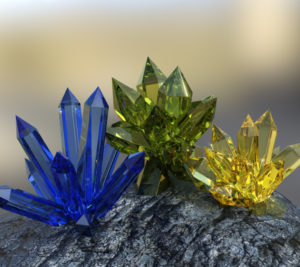How do color change or photochromic lenses work? What advantages and disadvantages do they have and what types are there? Surely you have ever heard of lenses or crystals that darken when you go out into the street, transforming into solar crystals and that lighten when you go back into the house or in any closed space. These are photochromic lenses or photochromic crystals.
Today I am going to tell you how photochromic lenses work and we are going to see their main advantages and disadvantages.
How do photochromic lenses work?
– Photochromic crystals, as we have said before, are those crystals that darken when exposed to UV radiation, that is, to the sun’s rays. They are commonly used in the making of trendy glasses.
– Once they are no longer exposed to those rays of the sun, they lighten until they return to the appearance of normal graduated glass.
– This darkening of the glass is due to a treatment that is applied to the lenses, whose components are materials that, when reacting with the sun, produce a photochemical reaction that gives rise to that darker tone. These materials are generally halide compounds of silver, copper, or the like.
– The first indications of the existence of photochromic crystals date back to approximately 1964. These crystals were only mineral crystals that, when they were not in contact with the sun, had a certain residual yellowish tone. In addition, they were “a bit slow”, since they took a while to darken and lighten again. Surely you remember seeing these crystals in older people.
– A few years later, around the mid-1990s and after a lot of research, they began to market photochromic coating on organic lenses. Since then, the treatment has been improved to get the darkening and lightening of the lenses to be done more quickly and the lens to be as aesthetic as possible.
What advantages and disadvantages do photochromic lenses have?
1.Advantages
The main advantage of photochromic lenses is the sun protection that we will always carry in our glasses. We know how harmful UV (ultraviolet) light from the sun is to our eyes and how important it is to wear suitable and approved sunglasses. With the photochromic treatments offered by our trusted optician, we know that we will be safe and protected.
Optical quality gradient sunglasses improve the quality of vision as they improve contrast in bright lighting conditions. They also reduce glare and reduce eye fatigue. As in outdoor conditions, glasses with photochromic lenses act like sunglasses, we will have all of the above covered. With new advances, this treatment has been possible to apply to practically any type of ophthalmic lens. For this reason, all people, regardless of their graduation, will be able to wear it.
They can be adapted to any frame and there are several shades available. We do not have to close ourselves to specific models, so we can be fashionable and have our eyes protected at the same time.
2.Disadvantages
Although they have been trying to improve the time it takes for the lens to darken and lighten for many years, it is still not instantaneous. A few seconds have to pass since we stop being in contact with the sun for them to clear up completely and the same thing happens when you go outside, it takes a few seconds for them to get dark.
Depending on the quality or type of photochromic treatment, the lens can sometimes be a little yellowish. If what we want is for the lens to be as transparent as possible when we stop being in contact with the sun, we must insist in our optics that they give us the most suitable photochromic treatment for it.
